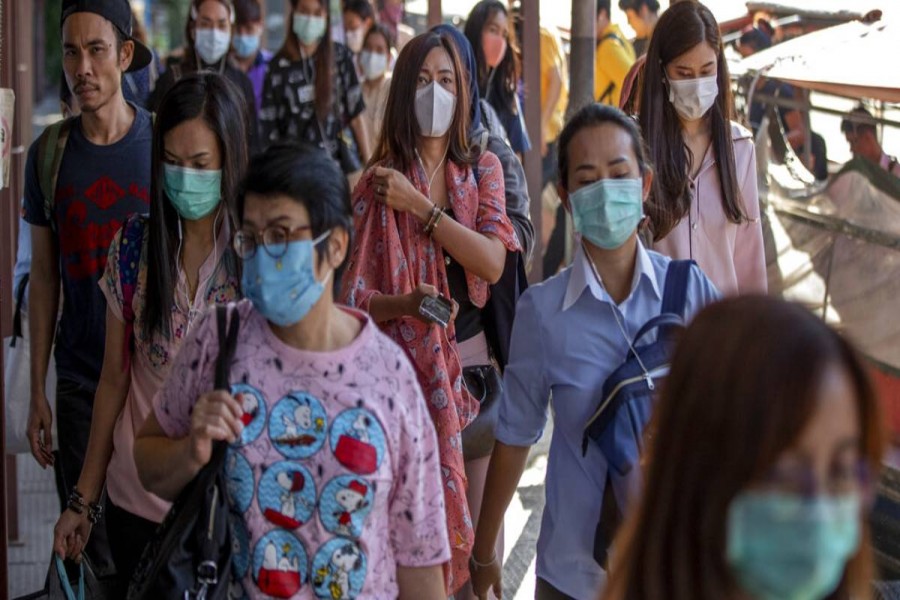As the global Covid-19 infections cross six million and the deaths approach 400,000, questions abound as to why the novel coronavirus has overwhelmed some places but left others less ruffled. This riddle has generated numerous hypotheses, but there have been no definitive answers yet.
A larger picture emerges when we compare the Covid-19-related mortality rates in various countries. China has had a mortality rate of 3.3 per million till now. The death rates per million for Japan, Pakistan, South Korea, Indonesia, Bangladesh, India and Thailand till recently have been 7.0, 6.0, 5.0, 5.0, 3.5, 3.5, and below 1.0 respectively.
Vietnam and Cambodia of Southeast Asia, Mongolia of East Asia and Bhutan of South Asia have recorded zero deaths, while the death rates per million in Canada and USA of North America have been as high as 180 and 300 respectively. For European countries like the UK, Italy and Spain, the death rates surpassed even 500 per million.
Virologists, health officials, epidemiologists and academics point to eight critical factors that may explain why or where the virus wreaks havoc and where it does not. These are: demographics, culture, climate, virus strains, genes-cum-immune system, obesity, government response, and random chance.
Demography may have some impact as many countries that escaped mass infections have relatively youthful populations. The younger people are less likely to have certain diseases that make Covid-19 deadlier. With 60 per cent of 1.3 billion inhabitants below the age of 25 years, Africa has till date only about 130,000 cases of infections - a tiny fraction of its population. In contrast, the national median age in Italy - one of the hardest hit countries - is over 45 years, with the average age of victims being 80 years. Notable exception to this hypothesis is Japan - the country with the world's oldest average population -where the fatalities are still below 1,000. Certain cultural features may have outweighed the negative impact of demography there.
Social distancing is traditionally practiced in societies like Japan, Korea and Thailand. The Japanese and Koreans wore masks long before the arrival of Covid-19. Good hygiene, habits like often avoiding handshakes, as well as universal healthcare system with emphasis on protection of elderly people may have lowered the death toll in Japan and Korea.
Caring for the elderly is a common custom in many developing countries like Bangladesh that is evident in operation of fewer nursing homes. Such nursing homes in Western countries have accounted for a significant portion of Covid-19 deaths.
The disease spread rapidly during winter in temperate zone countries such as Italy, Spain and the USA, while that was not the case in the warmer countries of Africa, South and Southeast Asia. Some studies show heat and humidity can slow spread of the virus, although it cannot be fully stopped.
Studies have found the virus to remain mutated when it travelled to Europe from East Asia. Some researchers say varying strains may explain contrasting infection and mortality rates, as a more contagious strain appeared to have infected Europe and the USA. Others, however, are not sure about that.
Tasuko Honjo, a renowned Japanese immunologist, claims existence of huge differences in the genes that control the immune system responses to viruses among people of Asian and European origin. Furthermore, University of Tokyo's Tatsuhiko Kadama asserts that the immune system of Japanese people tend to respond to the novel coronavirus as if they had previous exposure to it, as East Asia had been the origin of this type of viruses for centuries.
Other studies indicate that among Asians like Bangladeshis, the anti-TB vaccine might have caused immune boosting responses. Prior TB infections among a large number of Asians might also have boosted their immune system against novel coronavirus. Another factor that may have played a role in limiting the virus attack may be variations among people's microbiomes - the trillions of pathogens that reside in human gut and play a vital role in immune response. These variations occur as people eat different kinds of food at different locations.
Also, the citizens of Asian countries have much less obesity compared to those of Europe and America. Only 4.0 per cent of Japanese and 5.0 per cent of Korean people are obese. In contrast, the rates of obese citizens in Western Europe and the US are over 20 per cent and 36 per cent respectively. This may help explain the differences in death rates, as obesity is deemed to be a leading risk factor for serious Covid-19 patients.
Early, efficient and strict government response has been identified as a critical factor in containing the disease. Countries such as Vietnam, Taiwan, South Korea, New Zealand and Greece were able to control the infections through rigorous testing and tracing, social distancing, quarantines and isolations in the early stage. Having bitter experiences with HIV, drug-resistant TB and Ebola, many African countries also responded without wasting time and conducted required drills successfully. According to experts, part of the reason for higher deaths in the US and Europe may be attributed to an initial reluctance to respond to a pandemic that appeared distant and unthreatening.
Researchers also refer to sheer luck or random chance playing a part in spreading of infections. For example, countries with similar cultural and climatic features can have hugely differing outcomes if an infected person attends a crowded socio-cultural programme and turns it into what is called a 'super-spreader event'. Overall, the pandemic research still suffers from incomplete statistics, and conclusions drawn from initial figures may peter out at a later stage with emergence of newer data and findings.
Dr. Helal Uddin Ahmed is a retired Additional Secretary and former Editor of Bangladesh Quarterly.


